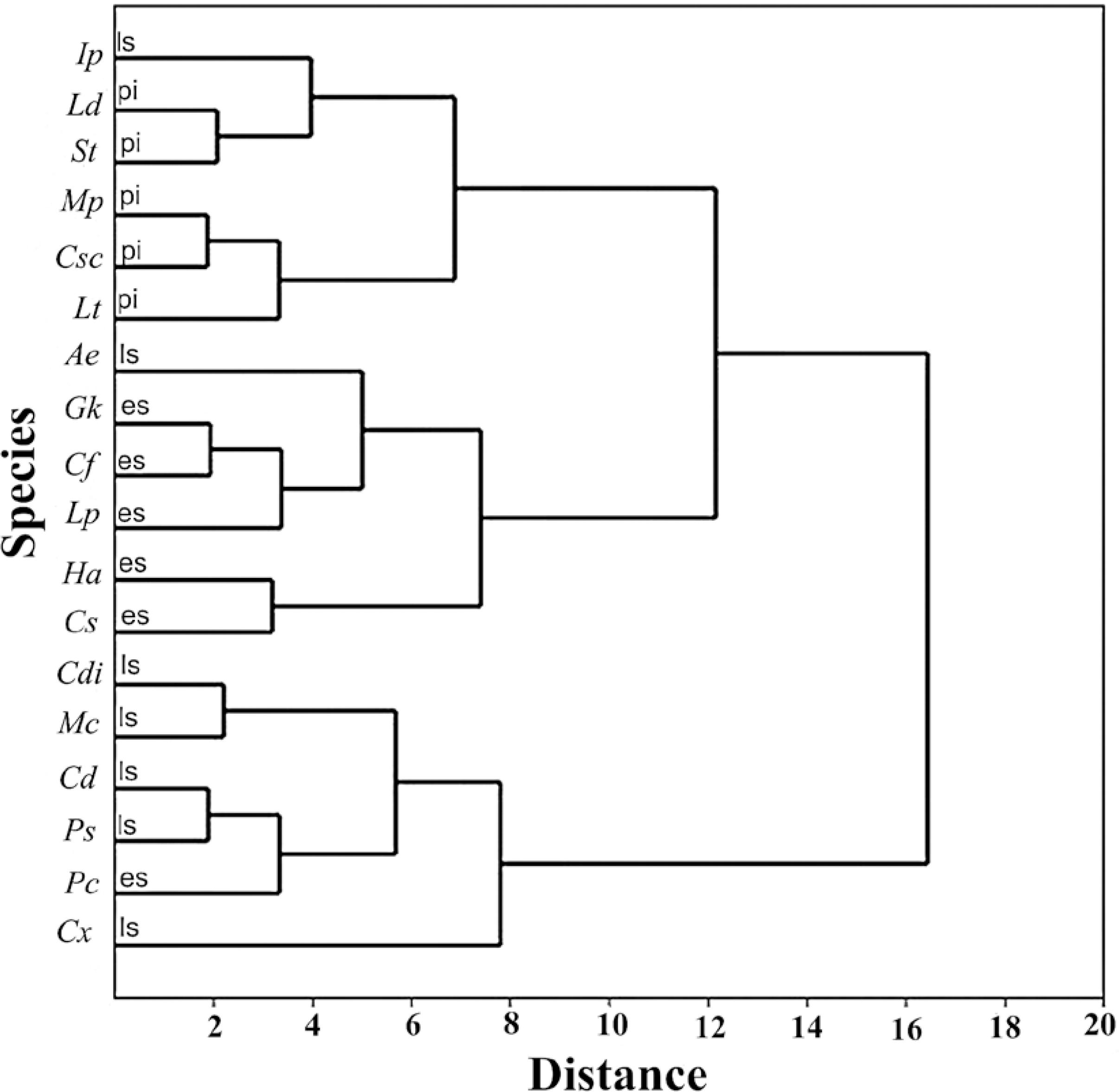Abstract
The objective of this study was to analyze the morphofunctional attributes of Mixed Ombrophyllous Forest species of different successional categories. Fruits were collected from forest remnants in Curitiba, Paraná. It was analyzed the biometrics of seeds and seedlings of all species and the following ratios were estimated: shoot/seedling length, shoot/seedling mass, cotyledons/seedling mass, eophyll/seedling mass and seedling/ seed mass. Statistical differences among sucessional groups were observed in many of the evaluated traits. The variability among species is mainly explained by seedling size, tissue investment for light interception and shoot resource allocation. Late secondary species have larger seedlings with characteristics that indicate slower initial development, dependent on seed reserves. The pioneers species have smaller seedlings but faster development and earlier dependence on photosynthesis. These morphological and functional differences can result in different strategies for the establishment of seedlings in the successional process. The cluster analysis results on formation of two major groups. The first group is comprised of the late secondary species. The second group includes two distinct subgroups that separate the pioneers, and most of the early secondary species. These results indicate that the number and quality of available data should be considered in the definition of successional categories adopted in ecological studies.
Key words:
araucaria forest; forest ecology; regeneration dynamics; seedling ecology




